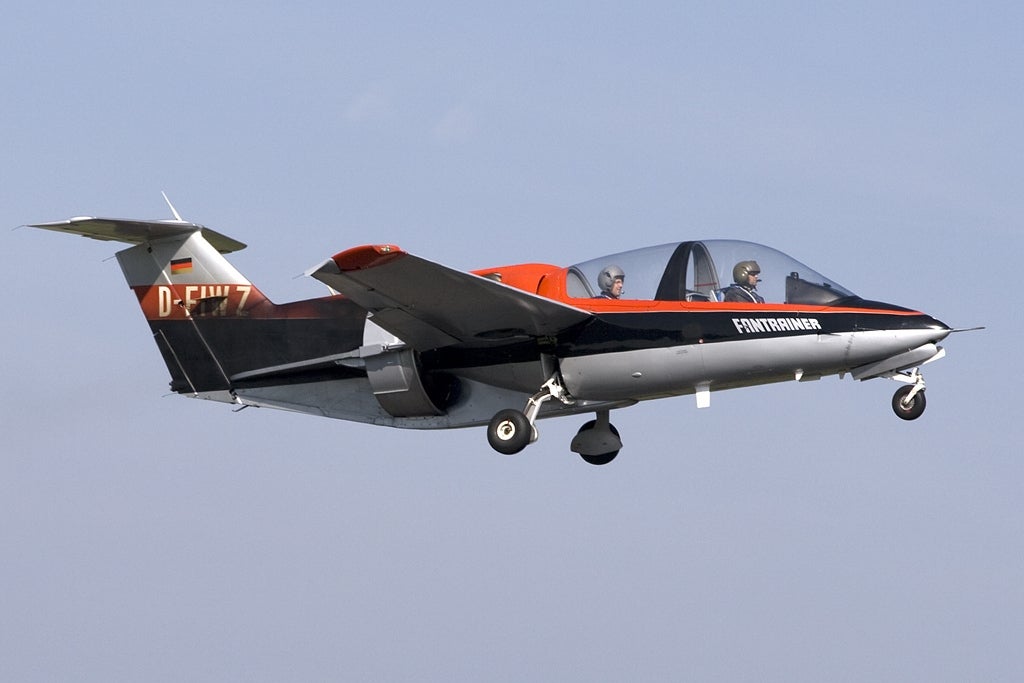 "Grindintosecond" (Grindintosecond)
"Grindintosecond" (Grindintosecond)
08/14/2019 at 09:41 ē Filed to: None
 3
3
 6
6
 "Grindintosecond" (Grindintosecond)
"Grindintosecond" (Grindintosecond)
08/14/2019 at 09:41 ē Filed to: None |  3 3
|  6 6 |
About 700+ pounds empty weight. 8,000 rpm fan unit that weighs 2 pounds of carbon. Pretty nea to shrunken L-39. I wonder how long that engine can last flat out at 12,000 rpm all day long.
!!! UNKNOWN CONTENT TYPE !!!
!!! UNKNOWN CONTENT TYPE !!!
 If only EssExTee could be so grossly incandescent
> Grindintosecond
If only EssExTee could be so grossly incandescent
> Grindintosecond
08/14/2019 at 10:51 |
|

A wankel ducted-fan †plane was almost made in the 70's but they went with a turboshaft for the production models.
 Grindintosecond
> If only EssExTee could be so grossly incandescent
Grindintosecond
> If only EssExTee could be so grossly incandescent
08/14/2019 at 11:43 |
|
this one is built to the EU ultralight regulations which is 400kg empty weight max. So aThe RFB Fantrainer is nearly three times that.
 TheRealBicycleBuck
> If only EssExTee could be so grossly incandescent
TheRealBicycleBuck
> If only EssExTee could be so grossly incandescent
08/14/2019 at 15:48 |
|
I built an 0.049 CI† model of that plane back in the day. The plans can be found online for free!
 Jetstreamer
> Grindintosecond
Jetstreamer
> Grindintosecond
08/16/2019 at 07:20 |
|
Looks like fun but Iíd still want the real L-39 instead though :P. Also, itís high time someone makes an A-10 and just puts a huge chunk of lead or something in place of the GAU-8 and then markets it as civilian/experimental.
 TheRealBicycleBuck
> Grindintosecond
TheRealBicycleBuck
> Grindintosecond
08/16/2019 at 11:43 |
|
It doesnít qualify as an ultralight in the U.S. Our rules include (from Wikipedia) :
Weighs less than 254 pounds (115 kg) empty weight, excluding floats and safety devices
Has a maximum fuel capacity of 5 U.S. gallons (19 L)
Has a top speed of 55 knots (102 km/h; 63 mph) calibrated airspeed at full power in level flight
Has a power-off stall speed of 24 knots (45 km/h; 28 mph) calibrated airspeed or less
The max speed disqualifies it from the Light Sport category too. It would have to be an E xperimental or go through certification.
Itís neat, but there are plenty of general aviation aircraft that †outperform it in payload, speed, and passenger count. I couldnít find any information on the fuel burn rate, so I canít speak to that.†
 Grindintosecond
> TheRealBicycleBuck
Grindintosecond
> TheRealBicycleBuck
08/16/2019 at 11:48 |
|
UK/EU UL rules are 400kg. Itís built to that. Otherwise it would be built to LSA regs in the US but like you said, that has max speed and stall performance requirements it blows out of both ends there , so it would be just a regular 51% home built.
Fuel burns in aircraft or any n/a engines generally follow 0.45 sfc so at 200hp, flat out it would burn somewhere around 15 gallons per hour. At altitude (75% power) 10-12 gph.